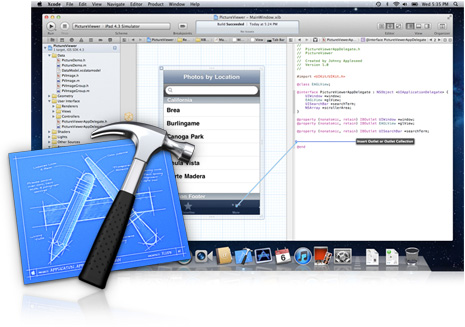Detailed Explanation of the iPhone App Development Process
Creating iPhone applications has been an attractive activity for both budding entrepreneurs and creative minds. Built by Macintosh, the iPhone is a device that reunites the functions of a media player, of a mobile Internet platform, and of a personal digital assistant. An application is a program that is downloaded and then set up on a mobile device and permits it to do a certain number of tasks including sending text messages for free, helping the iPhone user keep track of their weight, or finding nearby restaurants. In order for an iPhone application to become popular, it must feature innovation, a user-friendly design, and utility. The creation of an application for iPhones can be summarized in five steps.
Third, begin writing the code for your iPhone app. In general, apps for Macintosh products employ Cocoa programming, which is a software programming platform. Even if there is a variety of online tutorials and books that are available on the market, you may easily spend weeks or months learning how to properly write a code. If you are relatively unfamiliar with code writing, you ought to recruit a freelance technician so that they can complete this task on your behalf. This is clearly less risky than trying to write the code by yourself and jeopardizing the introduction of your application to the market.
Fourth, put the app through a period of trial. This can be done in two different ways: you may upload the application to your iPhone and then attempt to run it or you may simply ask less tech-savvy iPhone holders to try operating it. If there are minor issues such as any bugs or clumsy issues in the design of the application, then you ought to be able to fix them in no time. However, if you find out that there are major concerns, then you ought to retool the design of the app.
Fifth, after making sure that the app operates without any problems you may upload it to the Apple App Store on iTunes. Begin to advertise the application on related online communities and foster websites to conduct reviews on the application. You need to handle the reception to your application. Each time that there is a comment made on iTunes App Store, on both the message boards and the discussion threads on the Apple website, or in fan magazines, make sure to take it into consideration. This should help you improve the potential future versions of your application.
As you may see, the development of an iPhone application does not require any technical computer knowledge. Instead, it simply takes a little bit of time and a certain degree of engagement. Creating iPhone applications could be an easy way to earn money on the market of applications.




Leave a Comment